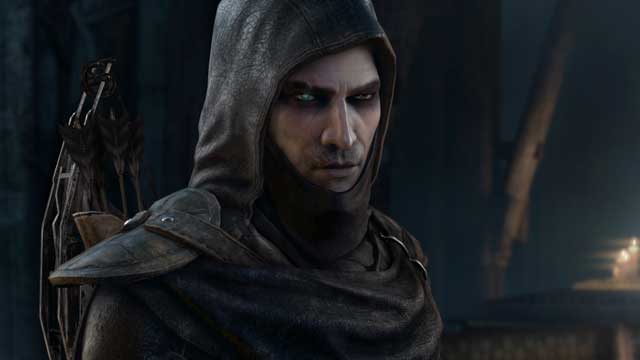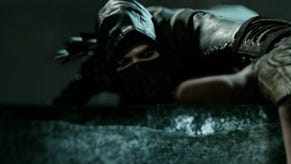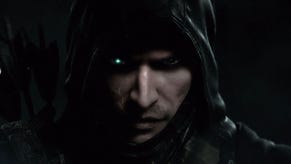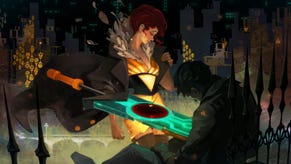Thief: Garrett is well-equipped to steal your old-school heart
Thief is Eidos Montreal's second attempt at rebooting a classic first-person franchise for modern sensibilities. Can Square Enix hit two for two? Brenna takes a break from burglary to nod enthusiastically.
We all had our doubts about Thief, didn't we? And who could blame us. Difficult initial subject matter. A couple of cracking good rumours about the development process. Team changes. Not to mention second album syndrome. It really didn't sound promising and I was quite prepared to cash in several small bets that it would be a dire hot mess.
Well, I'm out of luck, and out of pocket. Thief is pretty gosh darn good.
It's not as accessible as it could be, and depending on where you stand on that side of the debate - as a VG247 reader, you're probably the kind to make the sign of the cross whenever you hear that word - you may consider this good news. I agree; Eidos Montreal and Square Enix deserve praise for that. In this age of focus testing we expect big publishers to put out games with hour-long tutorials, constant hand-holding, drip-feed feature unlocks and all the challenge of a modest plate of wet noodles; that Thief is not that is pretty bold, and very cool.
I'm not saying it's mega-hard or anything but it's a lot harder than, say, Assassin's Creed, or Call of Duty, or whatever massive-selling franchise you fancy. Even on the lowest difficulty setting, with all the little hints and trips turned on - the navigation guide, for example - it's still a game that requires thought, patience and a bit of practice. It starts off a little frustrating, but once you've mastered the rhythm of avoiding detection, and have learnt the visual clues that will have you scampering across the city like a wee spider, you'll likely enjoy yourself.
This is a phenomenon common to stealth action games, because you need a little time to learn the rules. What's not as common is the follow-through - Thief's design is good enough that you don't hit any significantly long plateaus. The difficulty ramps up in stages as you progress; each new chapter takes place in a separate area, not the city hub, and each of these is very tight indeed, so you'll be learning new tricks and skills as you go. Back in the hub between missions, the number, types and patrols of guards will have changed, too, making things trickier.
A few chapters in you may, like me, glance back at an area you thought you'd fully explored and be surprised by just how different it looks to your increasingly savvy robber eyes. Certainly it'll be a very rare player who, on first visit, achieves everything possible in an area. Some of this has to do with Metroidvania-style gating, but a lot of it is just learning the systems, and especially learning how to manage your resources to best support the way you play.
I'm not terribly good at stealth-'em-ups because I don't have a great deal of patience, so I'm afraid I spent a lot of time bopping guards and civilians on the head. I don't blame the game for this, though, because it makes plenty of allowances for better-skilled players to take the purist road - heck, you can even force yourself to stick to various rules via the system menu.
What is extremely cool is that you don't have to. If you're the kind who reloads your save every time you get detected, Thief supports you in that. If you like to give it a go but bash heads when it all goes s**t-shaped, you can do that too - although Garrett's combat abilities aren't spectacular, and even skilled players will need to invest in certain tools and focus abilities to take this route. It's remarkable that both playstyles are so well-supported; it's genuinely not easier or more rewarding to take one route or the other. (That said, the challenge modes and leaderboards certainly favour the old school approach of no alerts, no combat, and all loot gained.)
I can't remember the last time a game catered so well to such very different ways of playing. Eidos Montreal said all along that its goal was to make a game to satisfy series fans but also provide something we weak-willed newbies wouldn't want to put in the microwave after our 15th death, but, well - developers say a lot of things. This one came true, and I'm having to gently rewrite my view of the universe.
As I briefly touched on above, resource management becomes a major issue pretty quickly. The array of upgrade options and tools available to you far outpaces your wallet, even if you're quite the meticulous thief. The sooner you work out how you want to play, and start hoarding your coins and focus points to back that up, the better - especially if you're going to try for a harder difficulty setting.
If I were going to level a major criticism I guess it would be that you don't get access to the full range of the store early enough, and the available tools aren't clearly explained. New players will have no idea what options might be available to them that are worth saving for, or realise just how such devices will be useful to them. To counter this I'd recommend a run-through on the lowest difficulty setting first, just to get your eye in so to speak. (Also: RTFM.) This will help you when you come back for your "real" playthrough (probably your first of many; there's plenty of scope for replayability and experimentation here).
I have to point out a few niggles because otherwise it takes me days to get the sugar coating off my teeth. Dialogue sometimes cuts out at weird times for no particular reason. Subtitles and dialogue often go out of sync. I hope both these issues will be resolved by the update that rolled out on PlayStation 4 before launch. Less easily resolved, fall distance can be hard to judge and the vast majority of my deaths occurred when Garrett seemingly forgot about gravity and skipped merrily over a drop - despite halting sensibly at other ledges. Specific to the PS4 version, using the touch pad for inventory access is a bit cumbersome and annoying, and the glowing light to show you're detectable sometimes randomly turns on and stays on.
Speaking of that light, let us pause for a moment to revel in all the little things Eidos Montreal has done to make stealth and detection easily parsed and comprehensible without having you stare at icons on the UI for half the game. When you move from shadow to light, the screen flashes or darkens momentarily, and there's a sound effect; it's unnerving to watch when someone else plays but with the pad in your hands you stop registering it consciously. When enemies are becoming aware of you, the sound changes and there's a visual effect on the edges of the screen, which alters when you move out of their line of sight.
This last one is particularly good because Thief's first-person perspective often makes it difficult to tell when enemies are looking at you based on the icons above their head - they're often behind you, or looking at you over an obstacle you can't see through. This is frustrating, of course, but it's part of the learning curve; Thief's stealth is all about managing line of sight, and the peeking system is pretty great and very easy to use - unlike the esoteric button combinations required in the older games.
Despite the ease of control and the visual gloss this isn't triple-A dressing over an empty action heart; this is old-school stealth action and accessible romp and Let's Play gold mine and veteran challenges and pretty attractive world building. Thief is many things but it's certainly not a cheap and easy console cash-in on one of PC gaming's holiest franchise. Eidos Montreal has managed to capture the spirit and philosophy of the glory years of first-person adventure without building something likely to alienate the vast majority of gamers, and that's a magnificent achievement.
Thief Arrives on PC, PlayStation 3, PS4, Xbox 360 and Xbox One on February 25 in North America and February 28 in Europe and beyond.










